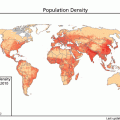Classification: ICD-9 088.81; ICD-10 A69.2
Syndromes and synonyms: Lyme borreliosis, erythema (chronicum) migrans (EM), tick-borne meningopolyneuritis, acrodermatitis chronica atrophicans.
Agent: The spirochete Borrelia burgdorferi. Initially identified as a single species, B. burgdorferi has been separated into at least 12 species. Almost all cases of Lyme disease are caused by B. burgdorferi sensu stricto, B. garinii, and B. afzelii, and very few by B. spielmanii and B. lusitaniae.
Reservoir: Small rodents (mice, voles, rats) and insectivores (shrews, hedgehogs) are the most common animal reservoirs of Borrelia, while larger animals (deer, livestock) serve as hosts for the tick vectors. Hares and birds may also serve as reservoirs. Ticks by trans-stadial transmission; transovarial transmission in ticks is limited.
Vector: Hard ticks, principally Ixodes scapularis (formerly I. dammini) and I. pacificus in North America, I. persulcatus and I. ricinus in Eurasia. In Russia, the principal vectors are I. persulcatus in the west and I. ricinus in the east.
Transmission: By tick bite or blood transfusion. Most transmission to humans is by the nymphal tick stage.
Cycle: Tick-small mammals and birds-tick; large mammals are necessary to maintain tick populations. Humans and lizards are dead-end hosts.
Stay updated, free articles. Join our Telegram channel

Full access? Get Clinical Tree




